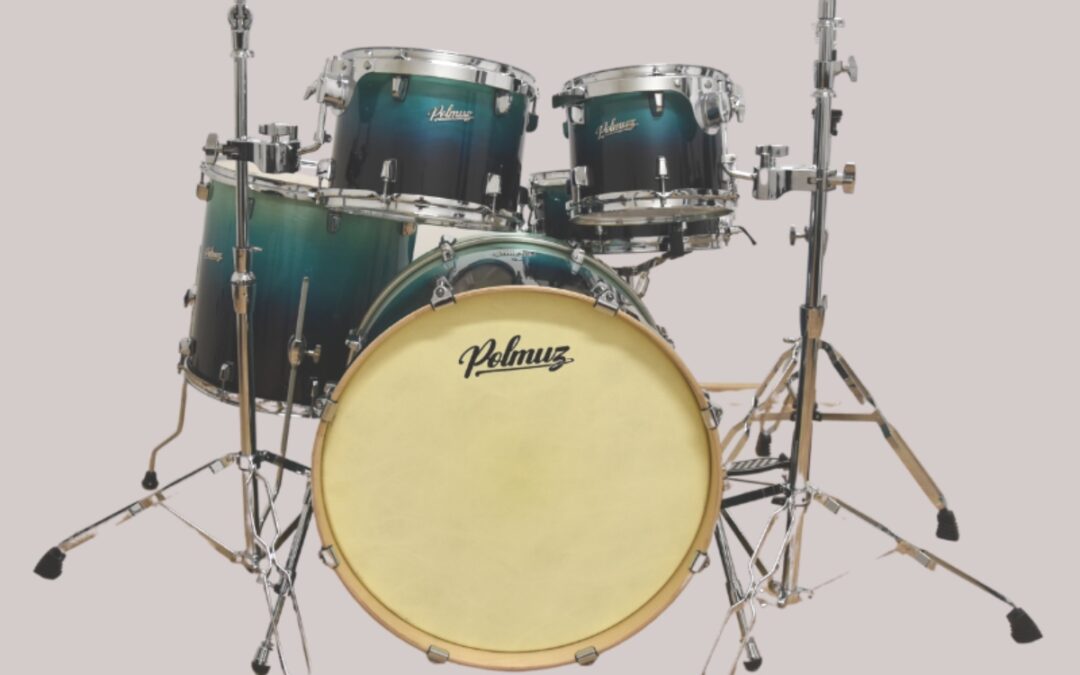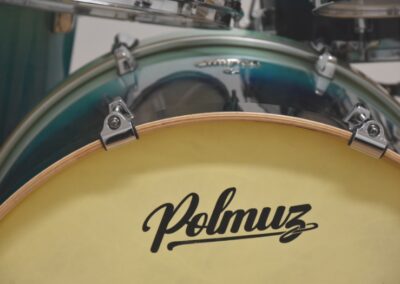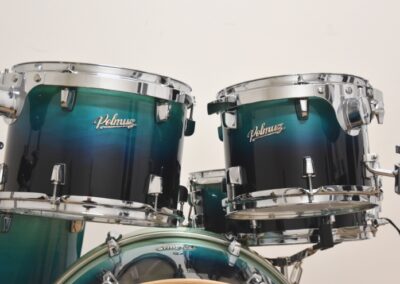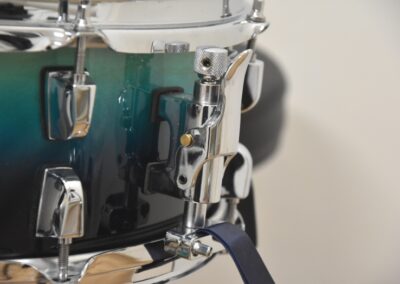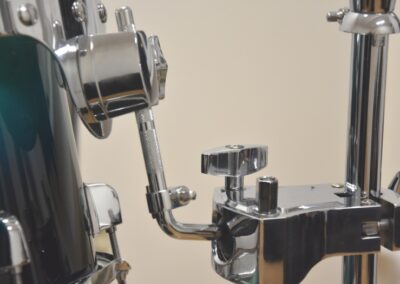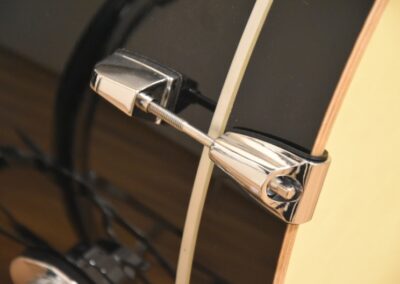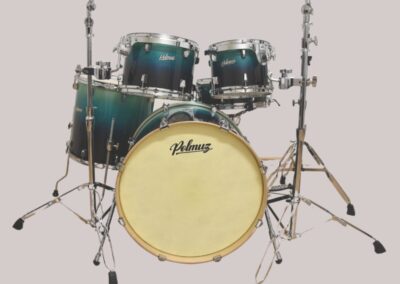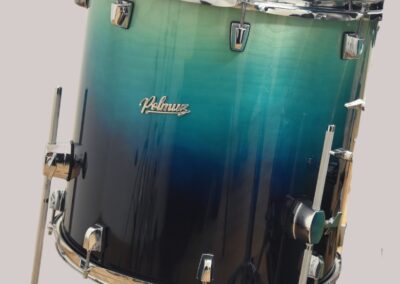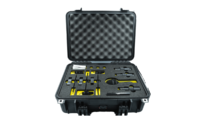We have received yet another parcel from drumstore.pl – an importer and distributor for numerous drum and percussion brands. This time round, it also contains a drum kit from the freshly rejuvenated Polmuz brand, which premiered in late 2019. Naturally, being Polish, we were more than happy to take a closer look at the instruments.
We are testing a Polmuz Birch Model 3 Blue to Black Fade kit

1. The test
The test was carried out in our own recording facility. The kit comprises two rack toms, a floor tom a kick drum and a snare. The heads put on by the producer were: Remo Emperor Clear (batter) and Remo UK skins (reso) on the toms, a clear Evans EMAD2 (batter) and a Fiberskyn-like Polmuz resonant head on the bass drum as well as a Remo Ambassador Coated (batter) and a Remo Ambassador Snare Side (reso) on the snare. During the test, we also used a prototype hardware set (bass drum pedal, hi-hat stand, snare stand, boom cymbal stand, straight cymbal stand, drum throne), which comes with the kit.
2. Basic specification of the drum kit tested here:
- Manufacturer: Polmuz
- Model: Birch Model 3
- Model no: M3-522-BTBF
- Kit elements: 10″ x 8″ tom, 12″ x 9″ tom, 16″ x 16″ floor tom, 22″ x 18″ bass drum, 14″x6.5″ snare
- Colour: Blue to Black Fade
- Finish: Glossy Lacquer
- Material: 100% Birch (6 plies, 6.9 mm)
- Tom mount: Non-invasive
- Claw hooks: Rubber pads
- Hardware: Chrome
- Virgin bass drum shell
- Stands: Yes (hi hat, snare, boom and straight cymbal stand)
- Bass drum pedal: Yes
- Drum throne: Yes
3. Product and sound
We tested the drum kit using the following tuning achieved with the help of a Tune-Bot device:
- Bass drum – C (first octave, 30 Hz on the batter head and 50 Hz on the batter head)
- Floor tom – D (second octave, 95 Hz on the batter head and 148 Hz on the batter head)
- 12″ rack tom – A (second octave, 138 Hz on the batter head and 255 Hz on the batter head)
- 10″ rack tom – E (third octave, 240 Hz on the batter head and 306 Hz on the batter head)
- Snare – A (third octave, 308 Hz on the batter head and 350 Hz on the batter head)
These kits will be available as of next year in the following configurations:
| BD 22”x18” TT 10” x 7” -, TT 12” x 8” – FT 16” x 14” – Snare 14” x 5.5” Blue Black Fade + hardware pack |
| BD 22”x18” TT 10” x 7” -, TT 12” x 8” – FT 16” x 14” – Snare 14” x 5.5”Coffee Fade #006F + hardware pack |
| BD 20”x18” TT 10” x 7” -, TT 12” x 8” – FT 16” x 14” – Snare 14” x 5.5” Blue Black Fade + hardware pack |
| BD 18”x14” TT 12” x 8” FT 14” x 14” – Snare14” x 5.5” Blue Black Fade + hardware pack |
| Snare Drum 14×6.5 Blue Black Fade |
| Snare Drum 13×6.5 Blue Black Fade |

Distributor: http://drumstore.pl/
OUR VERDICT: 5/5

Advantages:
- Well crafted
- Warm sound
- Attack
- Tasteful look
- Comes with a lot of hardware
In-between:
- Snare drum tuning rods loosen easily when playing rimshots
Disadvantages:
- None
See also:
Our Polmuz Tulipwood Aqua Blue drum kit test
Our Polmuz Tulipwood snare drum test
Our Polmuz Sycamore snare drum test


